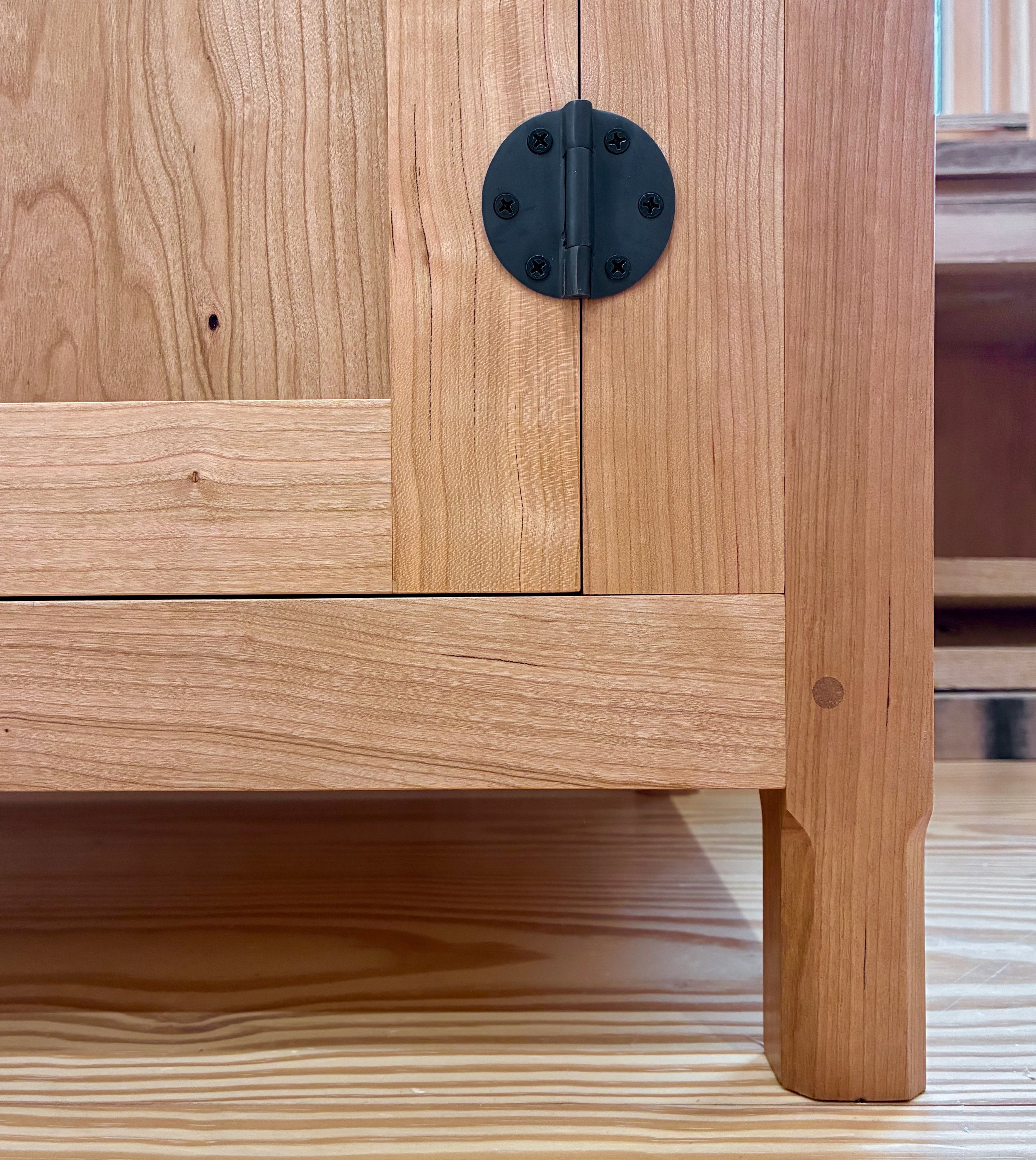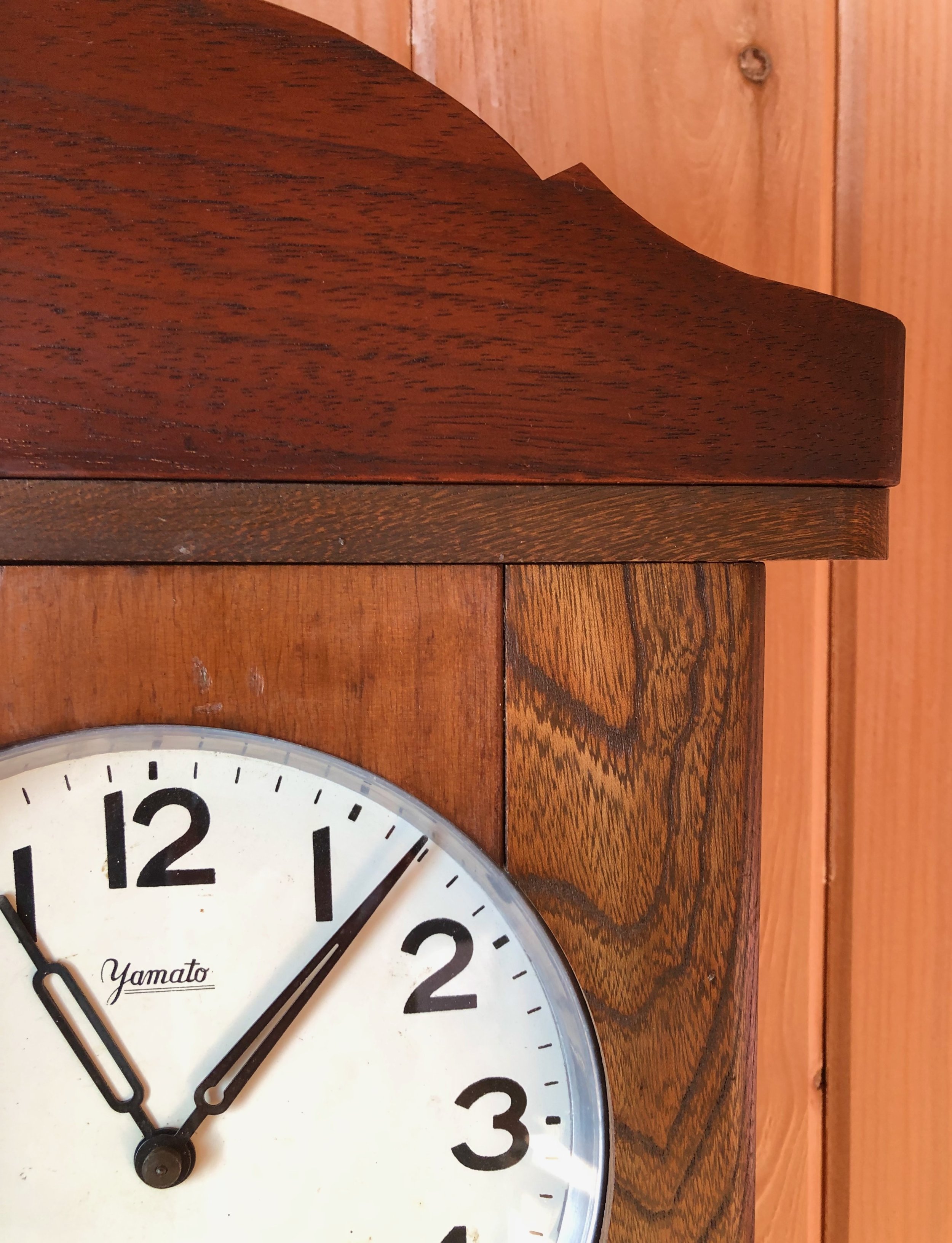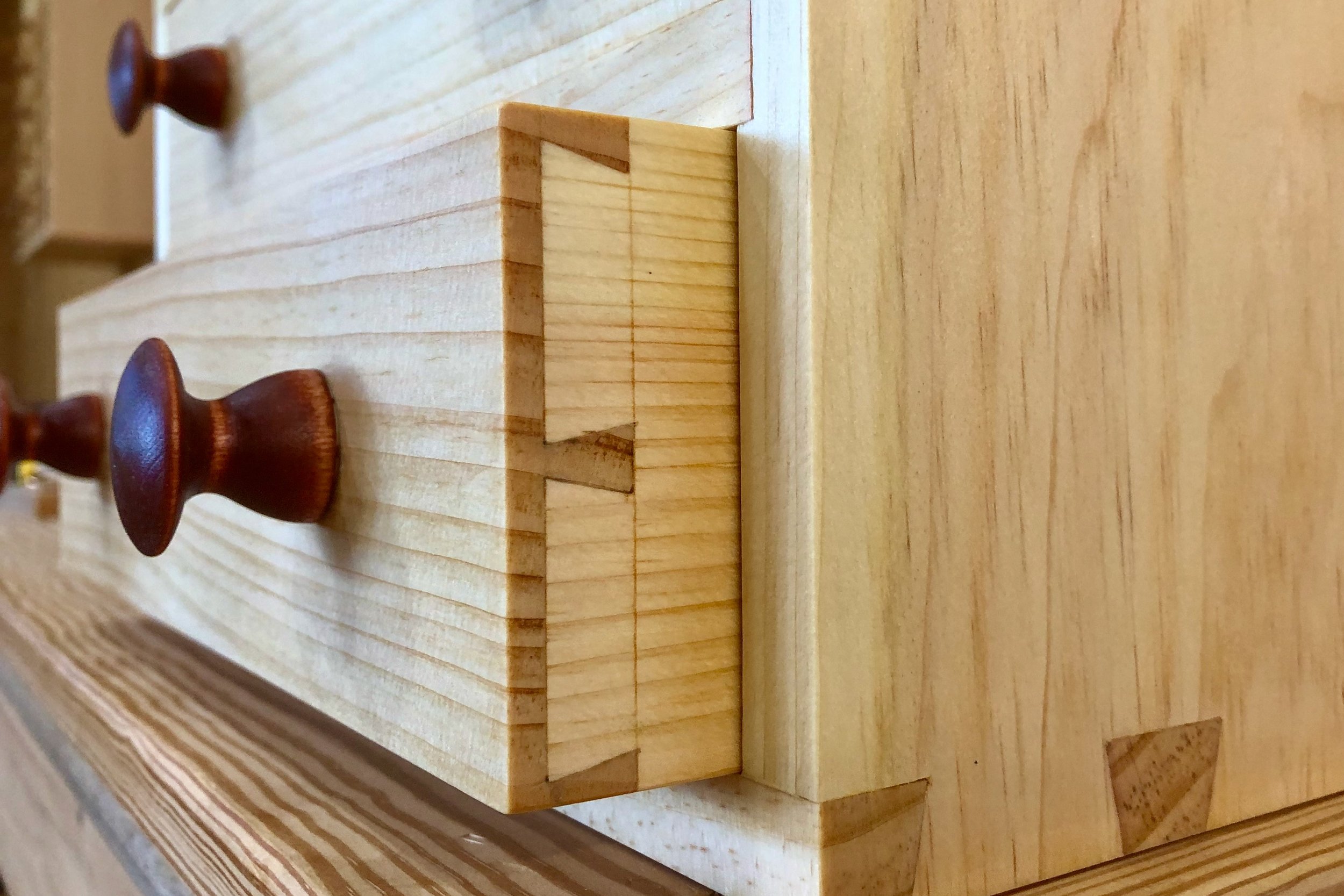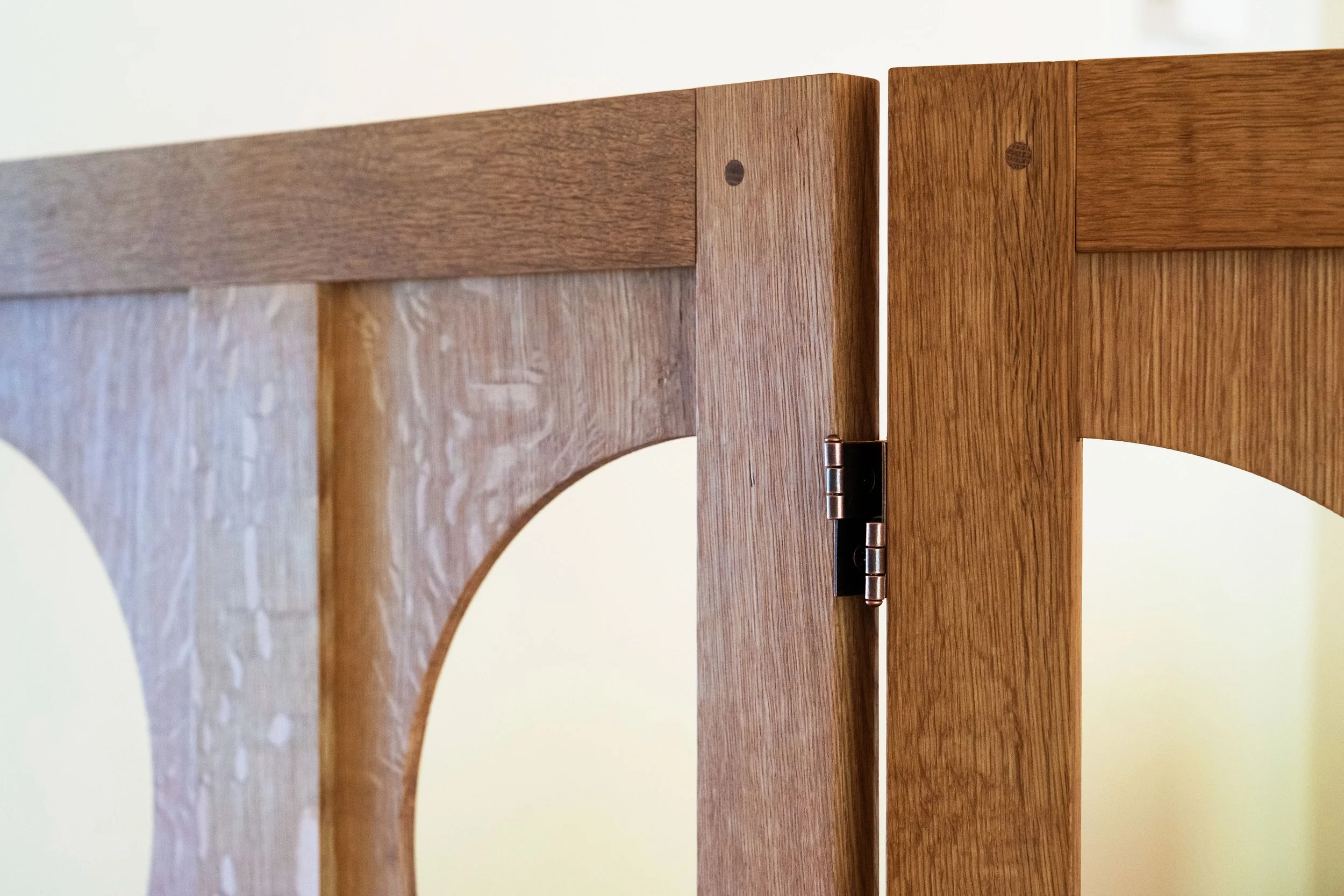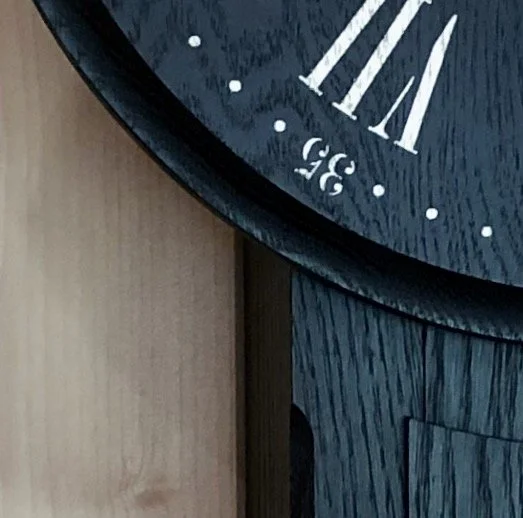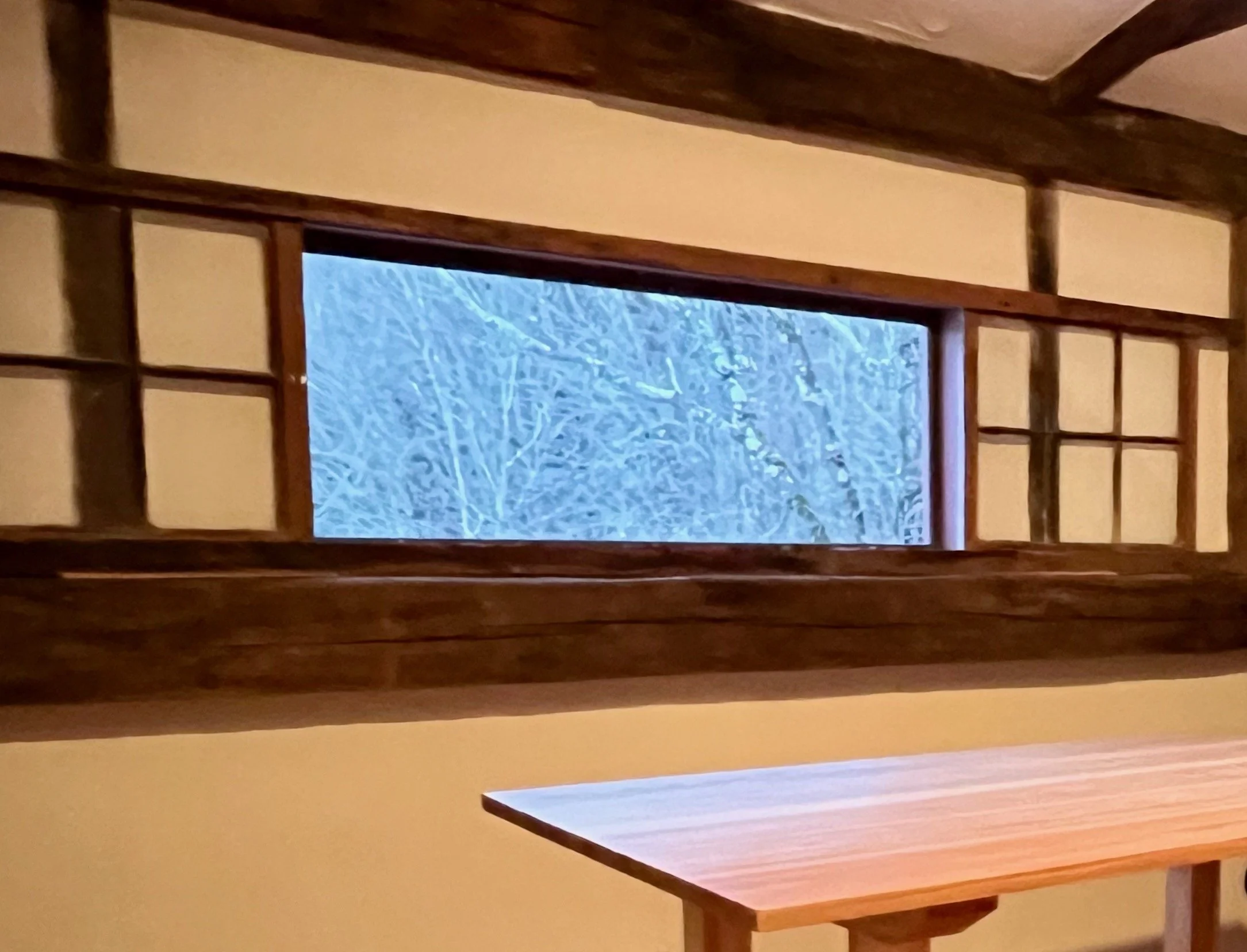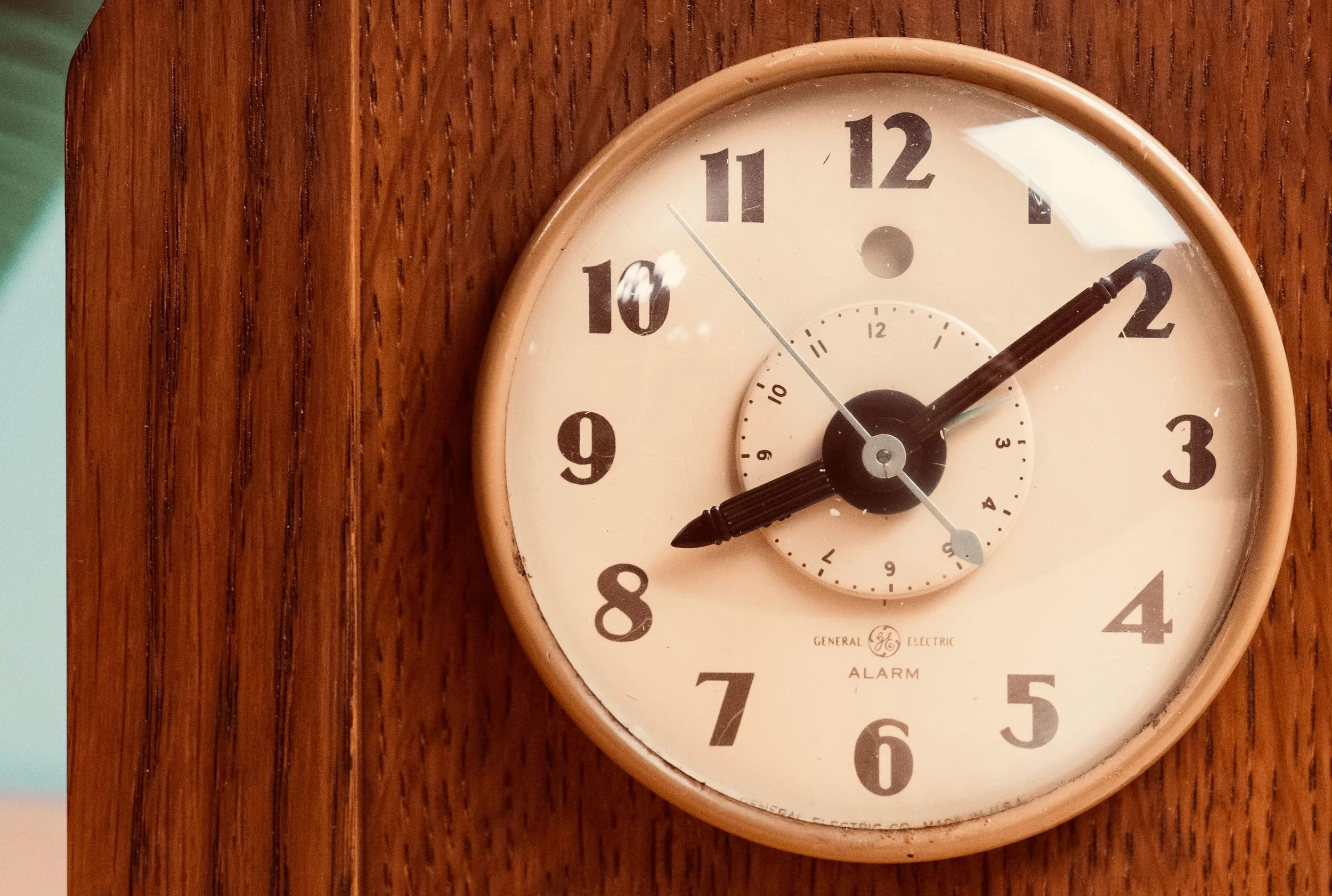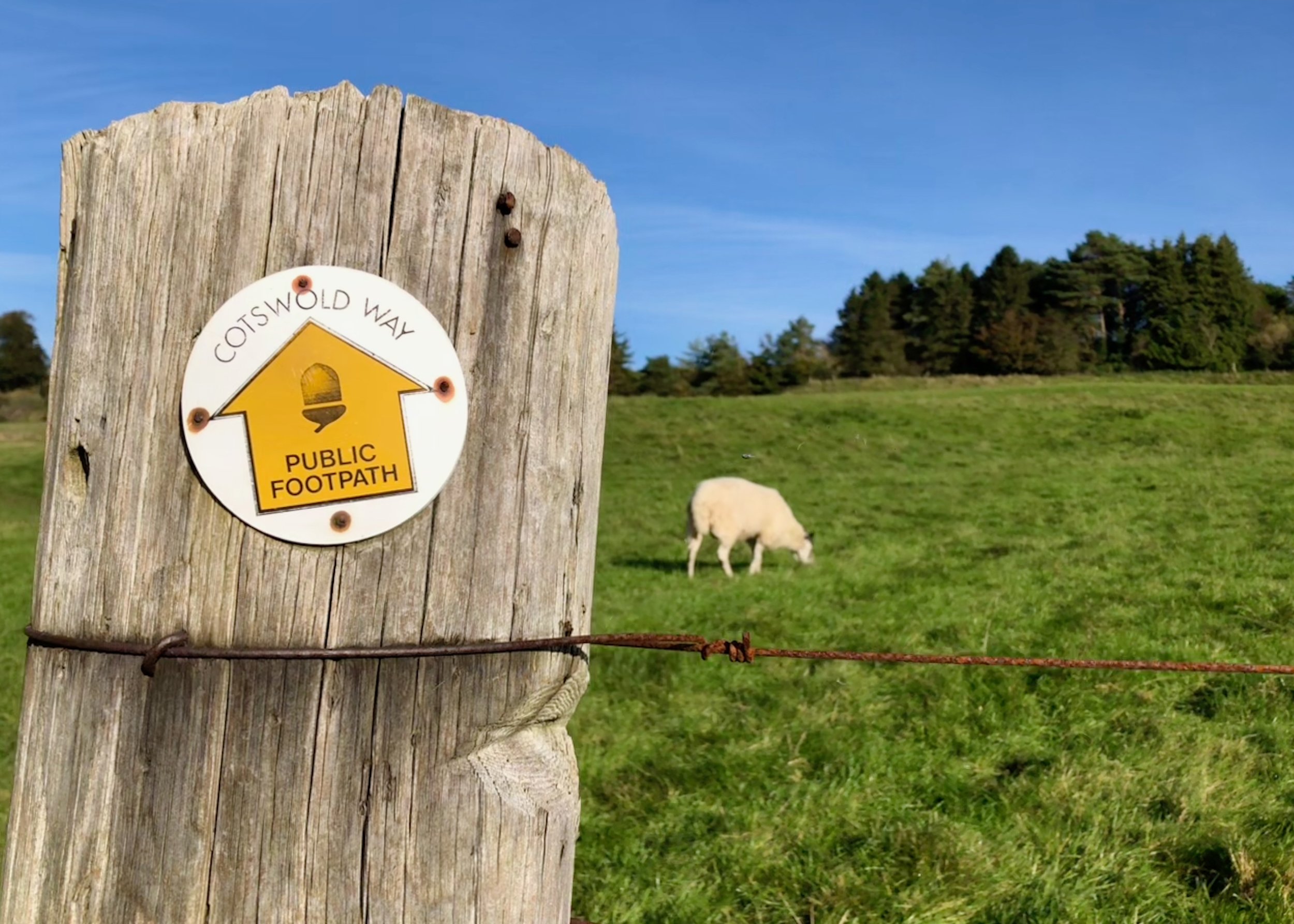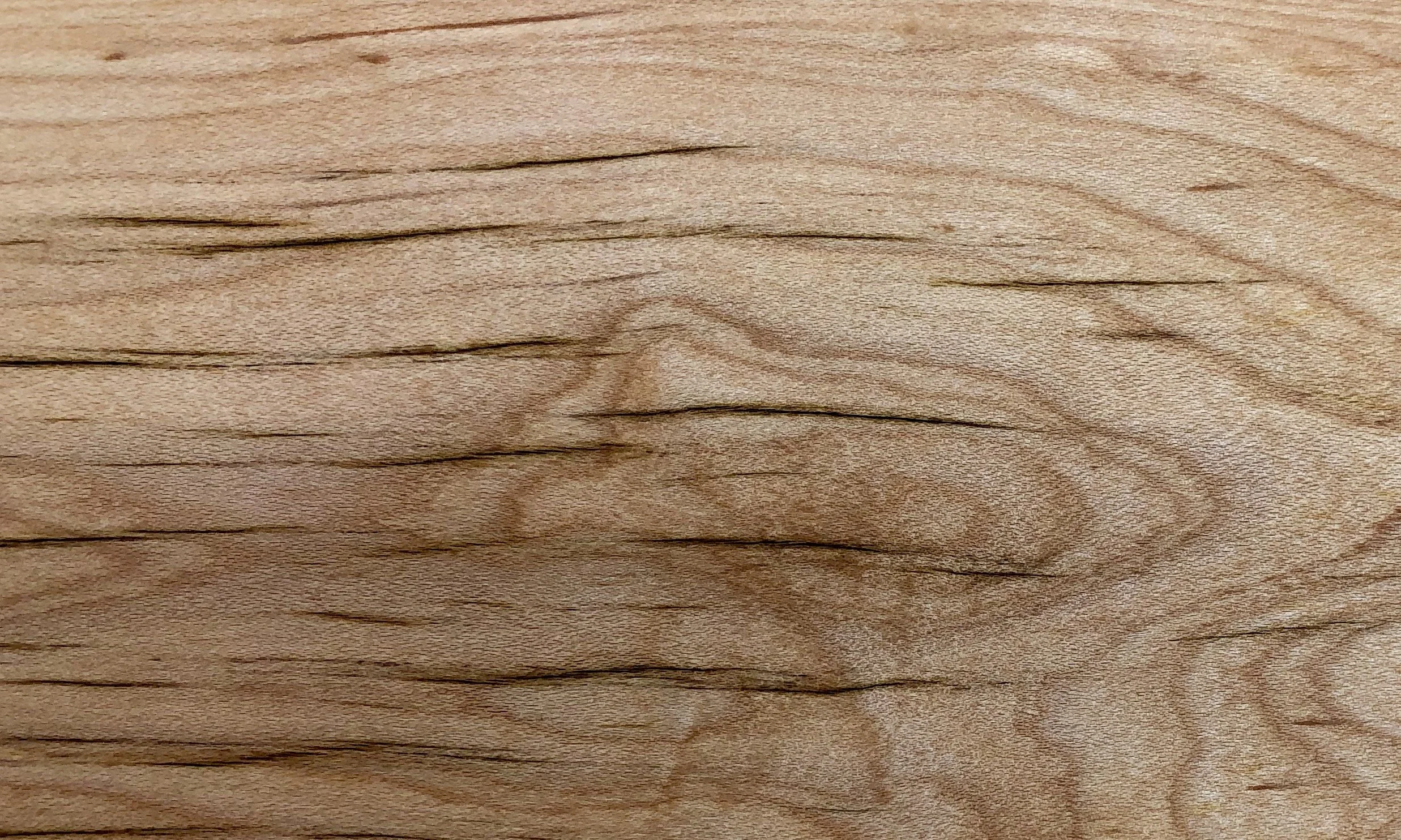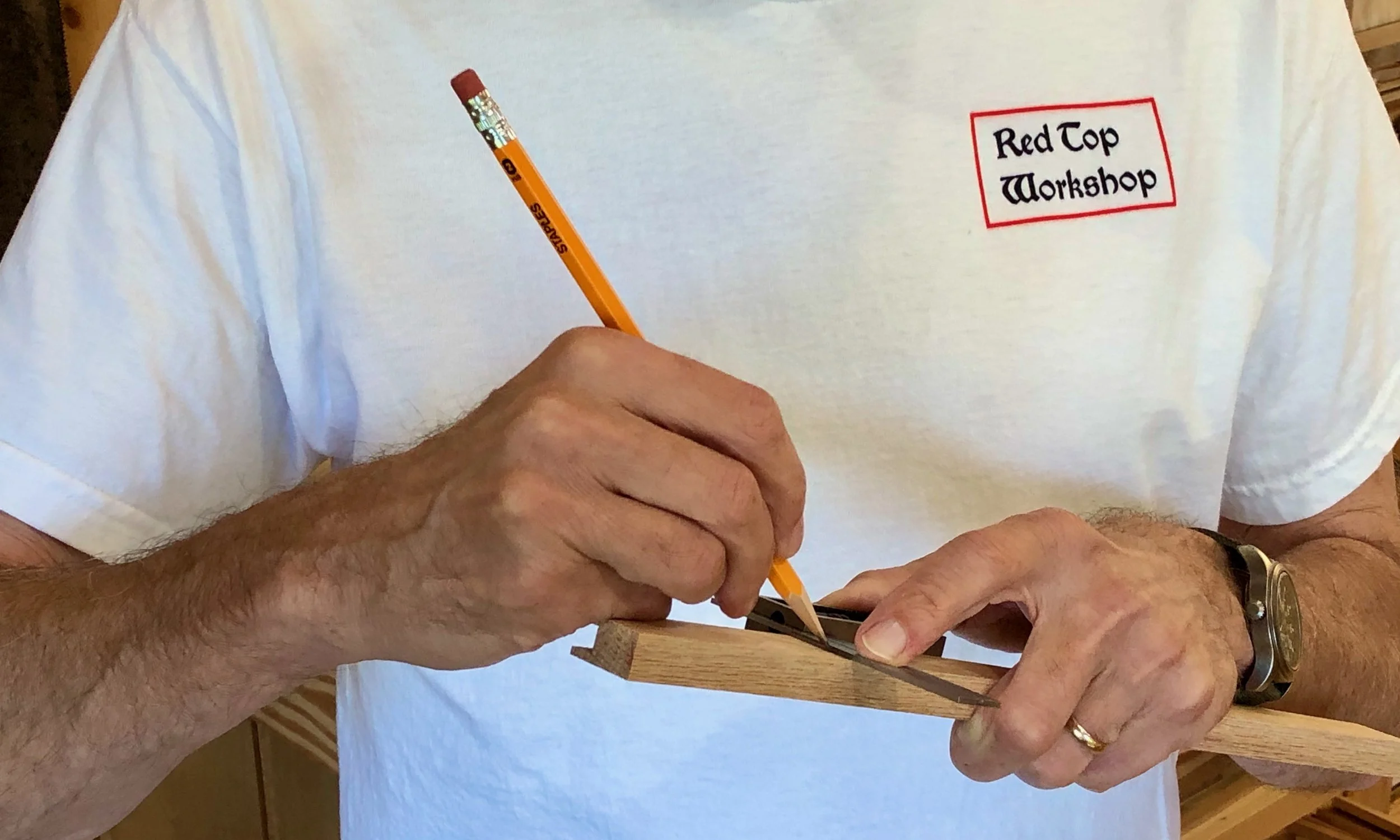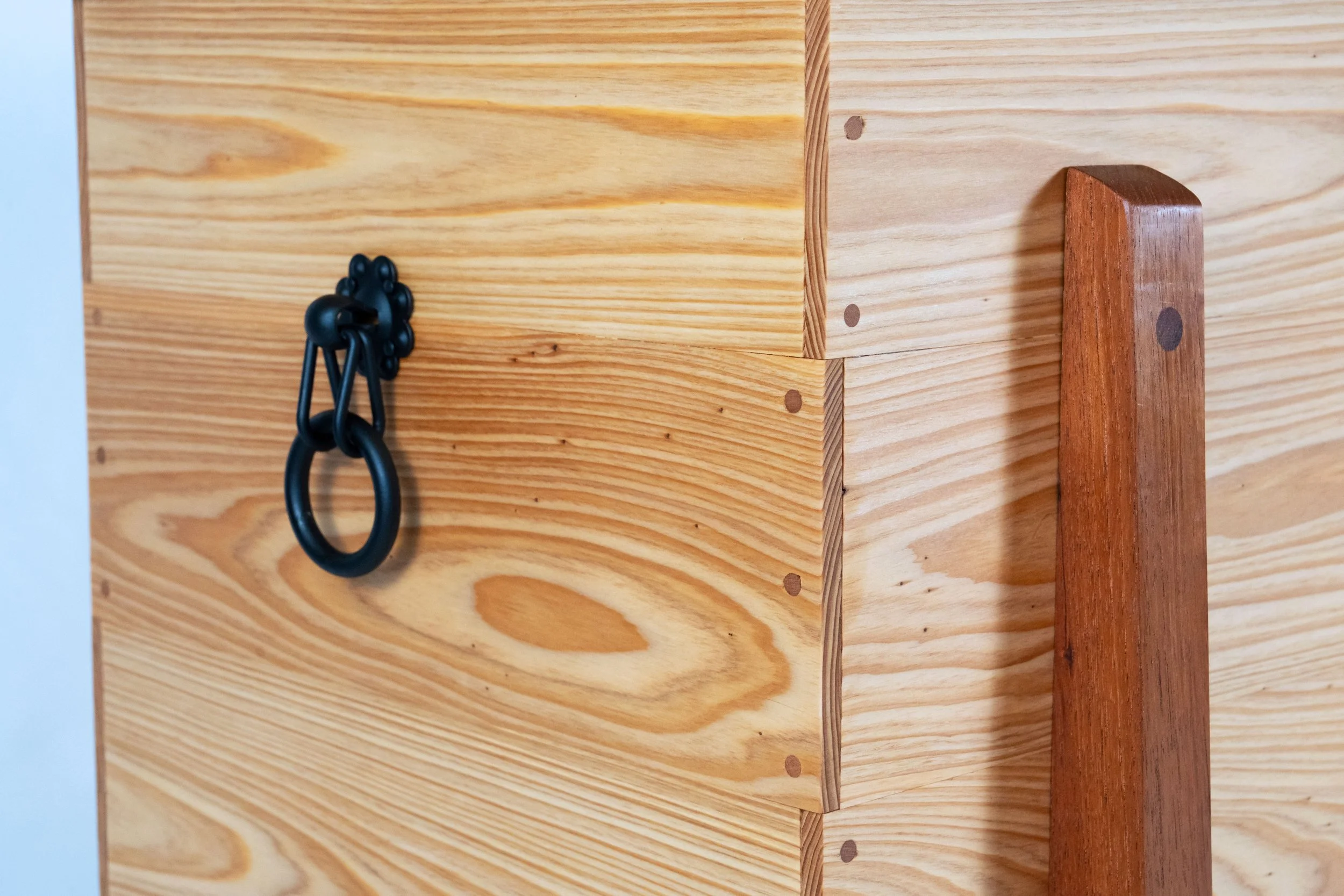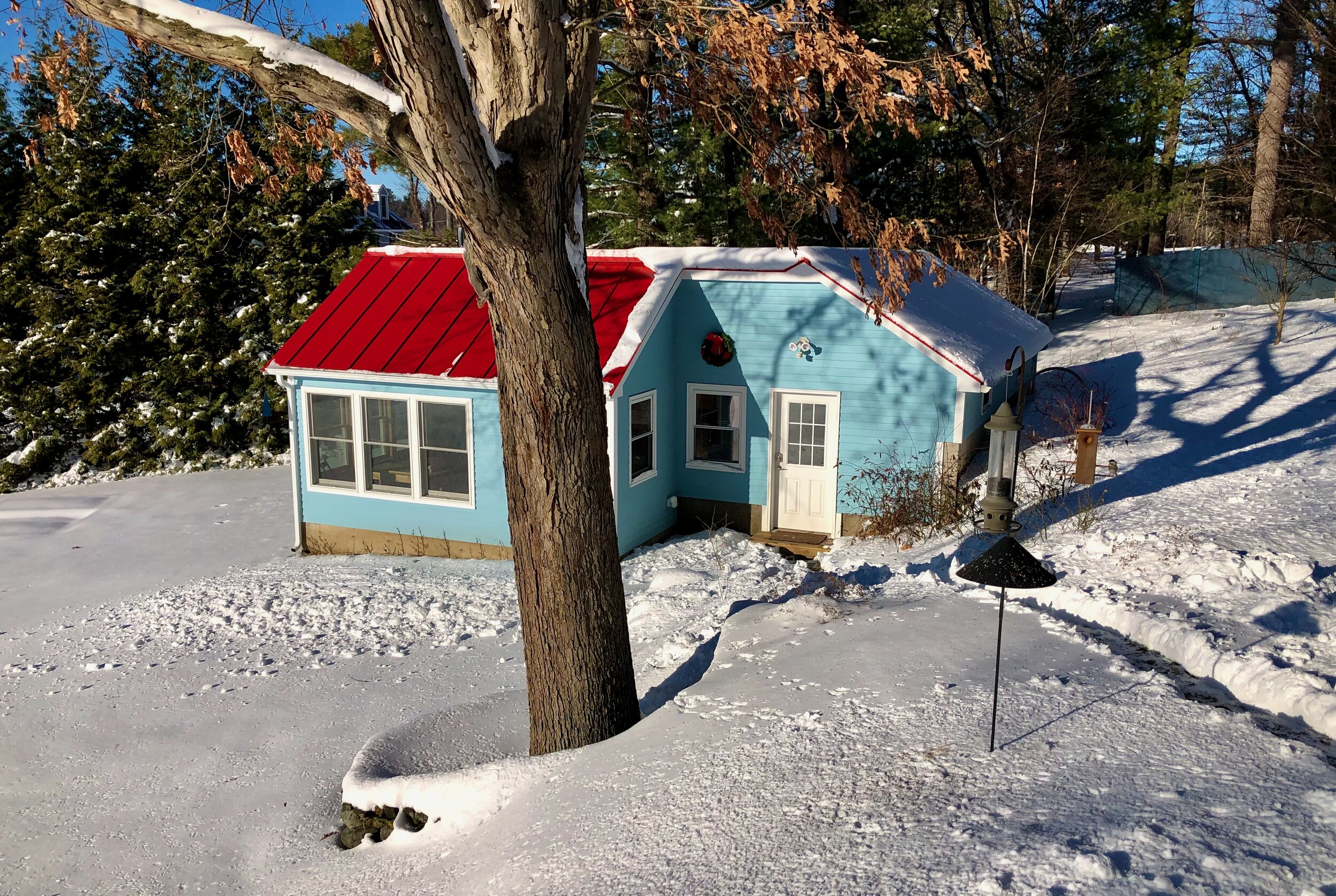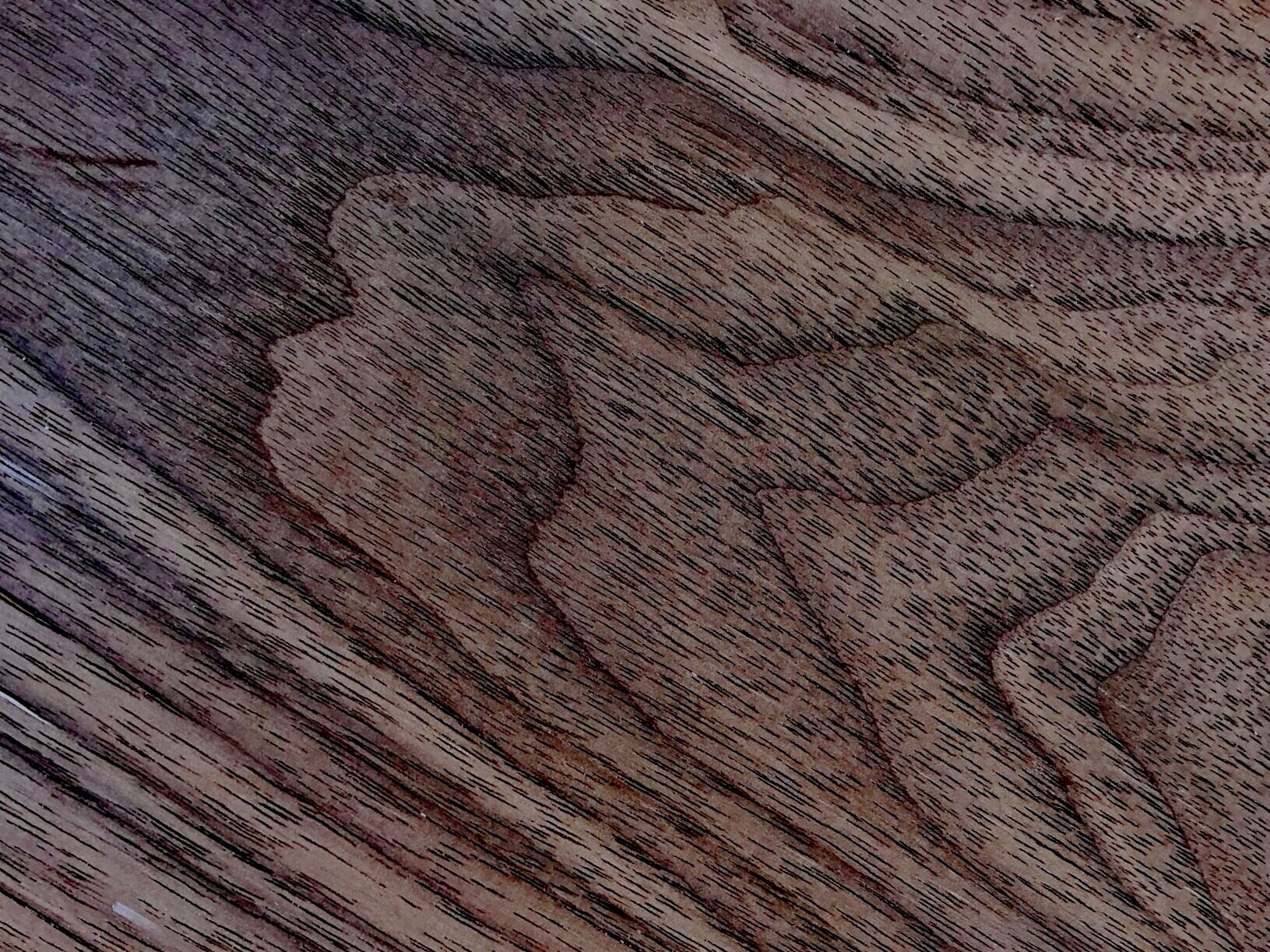
Under the Red Top
making the best of life & woodThe Sumo table
Sumo bout between Shiranui Dakuemon (Kumamoto Pref.) and Koyanagi Jokichi (Chiba Pref.), by Kunisada (c. 1840)
Here’s the story of a simple table Project that became something more.
Up to this point, all of my Asian table Projects had been based on a Korean desk design, so, for diversity’s sake, I decided that my next table was going to be Japanese-inspired. Traditional Korean desks have rectilinear leg boards, whereas, many Edo period (1600-1868) Japanese writing desks display attractive, curved edges. That was the inspiration. In design, I could extend the height to accommodate a shelf and this would then become a coffee table Project. Cutting the curves would also let me use my father’s old Rockwell 14 inch bandsaw, recently transplanted into the workshop. This sturdy machine dates to the 1980s and, now fitted with a 1/4 inch band for shaped cuts, its use will allow me to keep my 17 inch Grizzly version dedicated to a bigger blade for re-sawing and other hefty tasks.
Aside from the finished dimensions, the only remaining design decisions would be the actual leg pattern and the wood. Mulberry is a hardwood that was used in Japan for desks and was prized for its beautiful grain that would darken over time. Today, mulberry lumber is difficult to source, but African mahogany is not and it would be the alternative used. The leg pattern is what defines this piece. The challenge, as I saw it, was to incorporate flowing curves that would still look appropriate for a piece that would be twice the height of the few original reference drawings at my disposal.
Edo period writing desks, from: Koizumi K. Traditional Japanese Furniture, A Definitive Guide, K. Koizumi, Kodansha International: Tokyo, 1986.
Three other alterations would be made: the addition of a shelf; the consequent removal of the two “navel” openings; and omission of the bottom, tatami-zuri (Jp.) board. The tatami-zuri element, affixed beneath leg pieces, are commonly found in East Asian furniture where they served to protect the floor coverings from wear by otherwise narrower, weight-bearing contact points. They are, in fact, vestiges of much earlier East Asian furniture, where their presence was vital for carcass stability and to protect the legs from damp stone floors. I have incorporated tatami-zuri into some of my cabinets, but their use today on hardwood can be problematic, often serving only to highlight the humps in our floors. Without this feature, then, it would make sense to define individual “feet” into the sides. Introduction of a shelf might also necessitate enlarging the mid-section “waist” so that, in use, stored magazines or books would not protrude out of the sides and ruin the profile. (Did I mention that my Projects are inspired by Asian aesthetics and are not replicates?) To decide on the final form I sketched chimeras comprised of varied anatomical parts, and then mixed-and-matched from there to select a harmonious set of curves defining the shoulder, waist and foot. In the end, it would be 18 inches in height and quite a departure from the original inspiration, but (to me) still Japanese in form.
The rest of the Project consisted of prepping the lumber, cutting to final length and shape, mortising, chiseling, fitting, glueing, sanding and finishing. In sum, all of the woodworking enjoyment spared from this narrative. However, something notable happened as the leg pieces were taking shape that transformed the meaning of this piece. In practice, the curved edge of each leg board is sawed as two halves that have been previously stacked and taped together. This allows the profile to be cut on both sides of a leg simultaneously so that when glued together a perfectly symmetrical shape will result. (Imagine trimming a pattern along the edge of a book and then opening it to reveal a butterfly.) The half-profile outline of this piece resembled a noble urn, but when cut and paired together, my shoulder/waist/foot patterns formed the likeness of an actual person - a stout, muscular Sumo! To my eye there was no other way to see it. Further, as I began sanding and finishing the legs (a very intimate experience for woodworkers where they closely inspect the texture, grain and colors of the wood) I found that each leg/wrestler had their own personality. One wrestler appeared wholesome and friendly with the characteristic tuxedo striping of quarter sawn mahogany. The other wrestler was dark with patches of wildly figured grain that revealed a troubled upbringing. This revelation created a new obligation. If I were to mount these two combatants 28 inches apart - for the rest of their lives - I must also provide a wrestling ring (dohyō) and somehow capture the essence of their perpetual bout. The shelf and table top might serve this purpose and, fortuitously, I had yet to procure the wood for these features that now had something to represent. At the lumber yard I looked for wide boards that would furnish a complete shelf and only require a single glued seam down the middle to make the top. I picked through the pile of a dozen such boards until I uncovered the most quarrelsome looking plank of the lot. It’s grain pattern was dark and turbulent - gnarled, gouged, perfect! In the end, these same qualities would make it a challenge to smooth and finish, but this also seemed fitting.
The conjoined top of the completed Project now looms above the wooden dohyō. It grapples in opposed chatoyance, and the bout continues.
Making a Mark
In Korea it’s called a dojang, in Japan a hanko and in China a yìnjiàn - among aliases. They are the inked hand stamps (chops) used for millennia to sign the name of the bearer when required. In the West they are spotted most often as the red markings along the edge of East Asian printed art. Once used in place of signatures, they are today sometimes required in addition to the hand written version on important documents. Their use and history is complex but the items, themselves, are becoming endangered as electronic signatures supplant inked paper for official record keeping. They are beautiful, though. I got mine in 2016 for ₩15,000 ($14.00) from a street vendor outside of the Bamboo Forest in Damyang, South Korea. Yes, they have become tourist souvenirs, and perhaps that will be their ultimate niche. I watched mine being fabricated from an exotic hardwood by a modern artisan and his computer controlled engraver. This runs afoul of the traditional methods for handcrafting a personal dojang/hanko/yìnjiàn from jade or other high quality material which can also make these items precious and pricey. That doesn’t bother me. I like mine just the same. It is a component of the Workshop logo and I put the chop to every piece of furniture that is made there. I am told it spells “Mark Goulet” but since I cannot read Hangul it could say anything, and in that sense it serves as an abstract personal logo - no different than the “X” used by many illiterates of the past, or the illegible signatures used by many of us literates, today. It’s only function is to represent the bearer and to make a Mark.
My personal logo dojang under construction on the streets of Damyang, South Korea
What Would Woody Say?
I covet old woodworking books - especially the ones you can get for almost free at library book sales. That’s largely how I’ve built my collection. The most prized are the ones that have been used, with as-built dimensions neatly penciled on the pages. But alas, most of mine are found in mint condition. One unused, library sale gem on my shelves is the high school textbook Modern Woodworking by Willis H. Wagner. I have no doubt that it was indeed modern on its publication date (1967) but today we would consider it “mid-century modern”. Still, it covers all aspects of woodworking and serves as a handy source of concentrated wisdom. I bought it as a Xmas stocking stuffer for my younger son, Andrew, who was about to embark on a three month furniture making course at the venerable North Bennet Street School. This experience vaulted his skill level beyond mine and so the text sits in my library now. I have every intention of re-gifting it to him one day … when I’m through with it.
Like all good texts it is copiously illustrated and briskly paced. An endearing feature that surely rolled a few mid-century eyeballs are the “WOODY SAYS:” comments interjected throughout. These are mostly reminders of the hazards to be encountered should one fail to heed WWS.
Priceless!
I am convinced Mr. Wagner knew what he was doing when he scripted Woody’s lines. We all need reminders in life, and sometimes the seemingly self-evident ones are the best. They matter. And they can be picked-up almost anywhere you look. For instance, I enjoy watching The American Woodshop series on PBS. We don’t always use the same methods in our woodworking, but I admire the unquenchable enthusiasm shown by host Scott Phillips as he goes about his work. He has been doing that work on television for 27 seasons! His sing-song admonition whenever he uses the bandsaw: “Save the line; take your time!” is a Woody-ism that I chant whenever I approach my same tool. It helps.
Now, not all Woody-isms’ will please the soul when you hear them: “Mind the gap!” does; “Please make sure your seat backs and tray tables are ...” not so much. The one that tickles me most I first heard from my grandfather Otto, the woodworker. It is a variant of the old carpenter’s adage: “measure twice, cut once”, only instead of a reminder to check your work, its a reminder to check your approach to your work. When puzzling over a surprising result Otto would say: “Mmm!? I cut it off twice and it’s still too short.” That one fit right into my irony-seeking, adolescent brain and remains stuck there today. It often applies itself to situations on my Projects. The workshop, unlike the research laboratory, is a solitary environment lacking the peer review of proposals and the opportunity to bounce new ideas off of colleagues. It requires a self-check discipline to do well (and stay safe). That makes these especially wise and helpful words. They are WWWS!
How It Started
Charles Richter (right), carpenter c. 1910
I should have known it would come to this. Nothing crystallizes better than a life in retrospect.
As it happens … Edward, my father, was first a farmer and then a truck salesman who, additionally, liked to design and construct things. He built his own barn and the family cabin, among other structures. He was also a hobbyist woodworker with a workshop in our basement. That is where I learned to saw and fasten boards. In addition to fine cabinetry he liked to make kitchen things, birdhouses and the occasional furniture piece. Otto, my (maternal) grandfather, had a workshop in his basement too, equipped with all of the power tools available in the 1950s - Craftsman was his brand. That is where I first noticed the beauty in wood. By trade, he variously owned a silver fox farm, drove trucks and the village school bus. On the side he would make furniture and nice wooden items to sell. He was retired by the time I was born, so I only knew my grandfather as a woodworker. I recall that neighbors would bring him their broken furniture pieces and he would produce replica parts for them. Indeed, my childhood rocking chair sports a maple, Otto-made prosthetic arm. His father, Charles, a late nineteenth century immigrant from Germany, was a true carpenter. He built craftsman-style houses in Bay City, Michigan - the town where I was born. A few of his hand tools bearing a stamped “C. Richter” beneath the patina are the treasures of my collection.
This foundation, reveals two generational truths: you don’t have to just do one thing in life; and building with wood is a worthy vocation.
My professional training and career as a scientist would keep me pondering the sub-microscopic world by day - for decades. Off hours, in the macroscopic world, I dabbled in home renovations and refinished antique furniture while mostly raising a family. It was not until my older son graduated from college and I was helping him build a clothing chest … from dimensional pine and plywood … using a circular saw … while squatting on cold basement cement that it dawned on me: I had forgotten to build my workshop. From that moment I was playing catch-up with destiny. With the help of my sons, Ben and Andrew, I built a wall to partition our unfinished basement, added electrical lines and lighting, and ordered a suite of starter woodworking machines - Grizzly Industrial was my brand.
That was 2016. That is how it started.
Seasons Greetings
December 2020
Merry Christmas from the Red Top Workshop!
Keep doing what makes you happy in life - every day.
Have a prosperous 2021.




